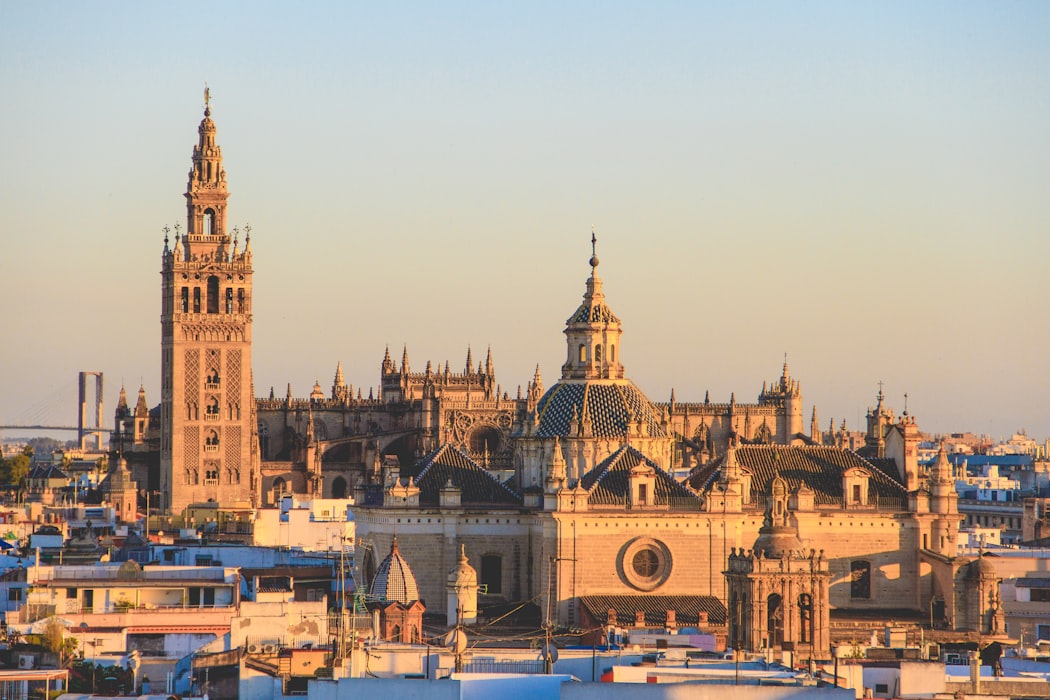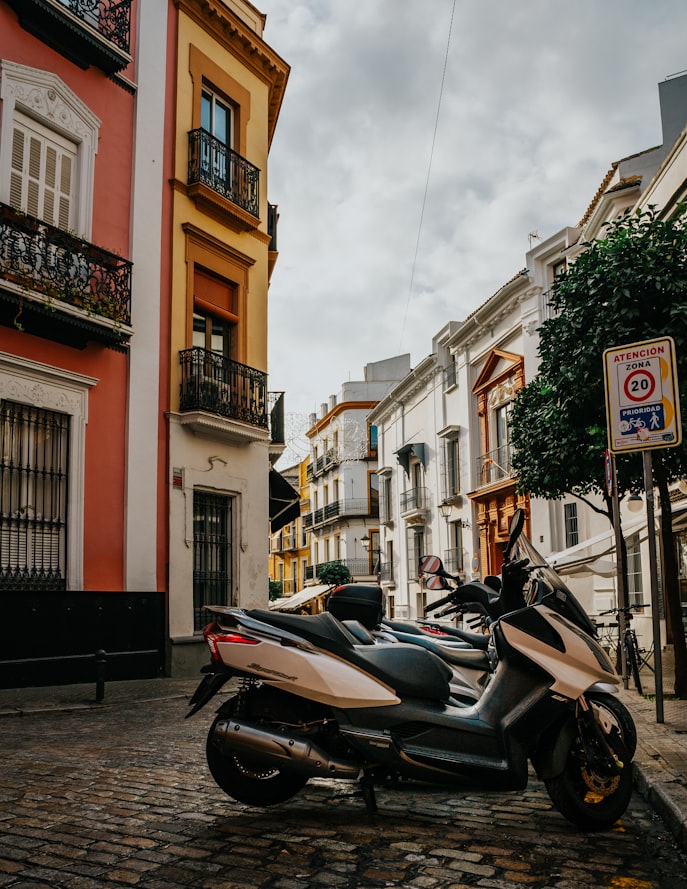Seville: A City of History, Culture, and Beauty

Seville is the capital of the Andalusia region of the South of Spain. It is famous for its flamenco dancing, especially in its neighbourhood of Triana. Significant monuments include the ornate castle complex Alcázar, established under the Moorish Almohad empire, and the bullring Plaza de Toros de la Maestranza, founded in the 18th century. The Gothic Cathedral of Seville is the location of the tomb of Christopher Columbus, and the Giralda, a minaret converted bell tower.

Top Things to do
For everyone, Seville has something to it. From its wonderful Moorish and Catholic temples to its ancient bullring, from fantastic tapas bars to enchanting old streets and massive wooden mushrooms, these are the top 20 sights.
Cathedral
The greatest Catholic monument in Seville amazes with its sheer size: it is the world’s largest Gothic cathedral. Construction of this sprawling Gothic complex, which houses 80 chapels and has Spain’s longest central nave, began in 1401 on the site of the former mosque of the town. Research proceeded for more than 100 years, and the cathedral was eventually finished in 1507.
Royal Alcazar Palace
The Royal Alcázar Palace is the key architectural attraction in Seville, along with the cathedral. Work on this great palace complex began in the 10th century when the Umayyads built a Moorish fortress attached to the Roman city walls, but the first royal palace was built on the site by the then-ruling Almohad dynasty until the 12th century. Additions and improvements persisted on and off until the 19th century, culminating in a framework that displays a combination of Moorish, Renaissance and Mudéjar architecture, the latter becoming especially prominent in the Palace of Mudéjar. The upper floors of the Alcázar are Seville residence of the Spanish royal family, rendering it the oldest continuously used royal palace in Europe. The entry is also free on Monday’s.
Giralda Bell Tower
Everything that remains of the great mosque in Seville is part of its minaret, now the Giralda bell tower in the cathedral, some of the primary architectural attractions in Seville. Originally, the minaret, which was constructed during the Almohad era, was topped with giant copper globes but these fell off in a 1365 earthquake. Probably seeing their absence as a message from the cosmos, the reigning conquistadors chose to substitute them with a Christian cross and bell tower. The path to the top is by ramps except for the final portion, which includes stairs – ostensibly so it can be accessed on horseback.
Casa de Pilatos
This beautiful mansion dating from the 15th–16th century is one of the hidden treasures of central Seville. Established in the late 1400s by Andalucia ‘s wealthiest conquistador and mayor, Pedro Enriquez de Quiñones, Casa de Pilatos is another of Seville ‘s iconic Mudéjar buildings, constructed around a historically Andalusian-style central courtyard. After Quiñones’ son Fadrique travelled to Jerusalem in 1519 and returned overflowing with enthusiasm for the Holy Land, his name Pilate ‘s House was granted. The obvious good looks of the palace have won it a leading role in two movies: Lawrence of Arabia in 1962 and Knight and Day in 2010.
Bullring
Real Maestranza Bullring in Seville is one of Spain’s most attractive and significant plazas. Construction began at the site of the old rectangular plaza de Toros in 1761 and was finally completed in 1881. Particularly attractive is the Gate of the Prince (the main entrance), whose ornate black iron gates were Pedro Roldan ‘s work and were originally the property of a convent. Being carried on the shoulders of fellow matadors and the public through these is a mark of great triumph, and one of the highest honours a matador in Spain can achieve. The excellent museum of The Maestranza explores the history of bullfighting and there are daily arena tours available.
Torre de Oro
The 13th-century watchtower known as the Torre de Oro or the ‘Tower of Gold’ is visible from any of Seville ‘s central bridges. It was built between 1220 and 1221 by the Seville Almohad rulers and underwent many restorations throughout the ensuing decades, the most recent of which was in 2005. Today it houses the small but interesting Maritime Museum in Seville, which explores the importance of the Guadalquivir River and the Atlantic to the history of the Andalusian capital.
Plaza España
One of the Mudejar classics in Seville is the Plaza de España, a stunning development built-in 1928 in preparation for Seville ‘s hosting of the 1929 Ibero-American Exposition. The half-moon-shaped building is facing a moat and bordering on a plaza with a beautiful fountain in its centre; it exhibits a striking mix of Mudéjar and Renaissance styles, with Art Deco splashes. Do to forget to take your cameras with you.

Maria Luisa Park
The southern part of the city received a costly facelift in preparation for Seville ‘s hosting of the 1929 Ibero-American Expo. Maria Luisa Park, a botanical garden, and the largest and most attractive greenery area of the Andalusian capital was at the heart of this redevelopment. In spring, when the many species of plants and flowers in the park are in bloom, it is a beautiful place to stroll around. The Mudéjar Pavilion, in which the Museum of Popular Arts and Traditions of Seville can be found, extends along the banks of the Guadalquivir, its half-mile of shaded walkways, tiled fountains, ponds and tropical foliage.

Archivo de Indias
Documenting the Spanish Empire’s Golden Age that followed Christopher Columbus’ exploration of the Americas in 1492 is the Archive of the Indians in Seville, a must-see for history boffins. These 16th-century buildings, protected by UNESCO, house some 80 million documents relating to the 16th, 17th and 18th-century Spanish Empire, a period when Seville was the most important city of the empire.
Plan your trip with Pickyourtrail

Andalucía in Spain is one of the all year destinations in Europe, Including in the Winters. Whilst getting ready for your trip isn’t rocket science, having a trusted travel partner can be another advantage. Pickyourtrail provides customised travel packages that be created to suit individual requirements completely online. It not only ensures quick and trouble-free travel but also keeps the cost-efficiency under control. To know more, sign in to www.pickyourtrail.com and start planning your trip to Spain.
Related Posts
Update your location?












